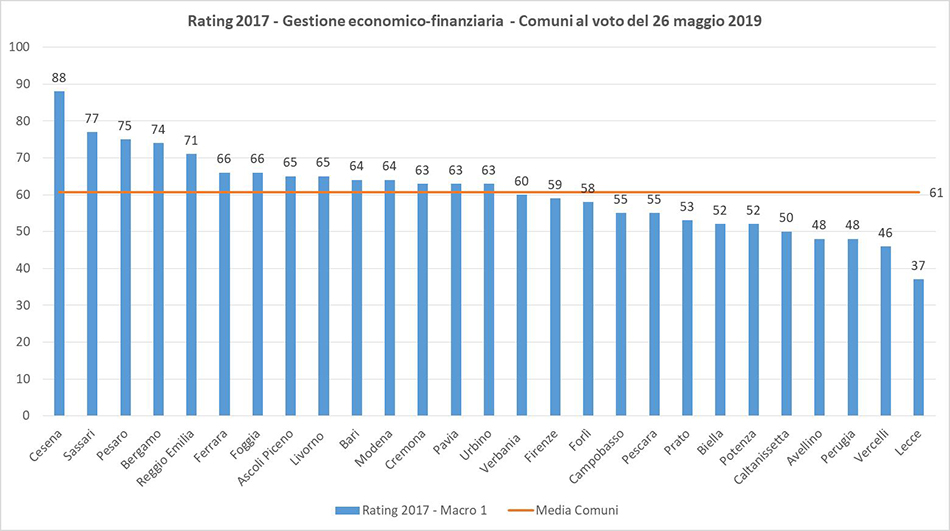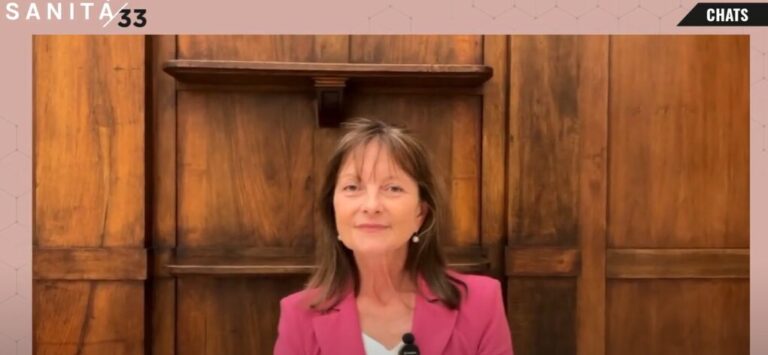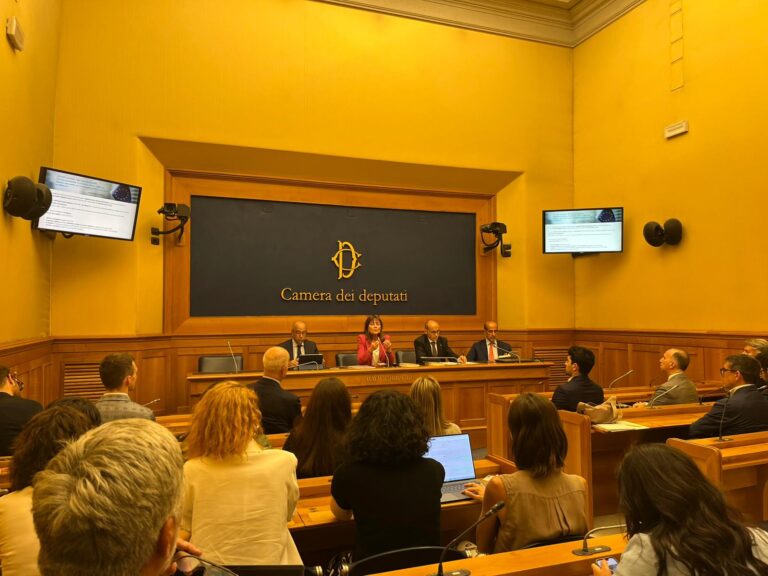In May we vote not only for the European elections but also for the administrative elections in 27 provincial capitals.
These are 11 Municipalities belonging to Northern Regions, 7 to those of the Center and 9 to those of the South. In administrative terms, these are 2 metropolitan cities (Bari and Florence), 5 regional capitals (Potenza, Campobasso and Perugia as well to the aforementioned Bari and Florence) and 20 provincial capitals (Ascoli Piceno, Avellino, Bergamo, Biella, Caltanissetta, Cesena, Cremona, Ferrara, Foggia, Forlì, Lecce, Livorno, Modena, Pavia, Pesaro, Pescara, Prato, Reggio Emilia , Sassari, Urbino, Verbania and Vercelli).

Fondazione Etica analyzed and compared them with the Public Rating methodology, which does not limit itself to assessing financial indicators only, as instead - from what is understood - Carlo Cottarelli's Observatory on Italian Public Accounts does, but also includes those qualitative indicators established by the regulations, primarily by the anti-corruption law of 2012 and by the transparency decree of 2013. It is only with a complete financial and qualitative measurement that the performance of a Municipality can be fully and correctly evaluated.
Among the financial variables, the Public Rating analyzes eleven indicators, the results of which we propose below, referring to subsequent articles those relating to the other macro-areas in which it is divided, such as, among others, governance, services and tenders.
The results of the economic-financial indicators for 2017 of the 27 provincial capital administrations to vote, on the one hand, confirm some clichés; on the other, they deny others.
Unfortunately, the fact that the Municipalities of the Centre-North are generally more performing financially than those of the South is confirmed. In fact, the following are placed at the top of the ranking for budgetary indicators: two Emilian Municipalities, Cesena and Reggio Emilia; one Lombard, Bergamo; one from the Marche region, Pesaro. On the other hand, Lecce is placed in the queue, which, like another southern city such as Avellino, obtains an insufficient Public Rating, as well as well below the average of the sample, equal to 61.
However, there are surprises which, at least in part, modify the geography of administrative efficiency as usually imagined. Following Lecce, in fact, is not Avellino (score 48), but a northern municipality such as Vercelli (46), as well as one in the center such as Perugia (48).
Not only. Following the first place of Cesena is not Reggio Emilia (score 71 out of 100), but Sassari, with score 77.
Furthermore, important local administrations in the south obtain a Public Rating for the economic-financial macro-area above the average: in addition to Sassari, also Foggia (66) and Bari (64).
On the contrary, administrations in the North and Center such as Florence (59), Forlì (58), Prato (53), Biella (52), in addition to the already mentioned Perugia and Vercelli, unexpectedly obtained a rating below the average.
In more detail, in first place in the Public Rating classification for the financial statements macro-area is Cesena, which, with a score of 88 out of 100, is close to the Excellent Rating class. The city, which obtained the maximum score in nine indicators out of the eleven analysed, presents a financial framework with many strong points: no financial deficit or recourse to treasury advances; high financial autonomy, spending capacity and collection capacity; limited expenditure rigidity and a satisfactory level of planned investments.
The second place, as mentioned above, comes surprisingly to the Municipality of Sassari, with a score of 77 out of 100. The excellent result is based on the high spending capacity and contained debt values and expenditure rigidity, in addition to the absence of recourse to treasury advances. Non-optimal values on financial autonomy and capital expenditure, in both cases below the average value of the sample, explain the positioning of Sassari behind Cesena.
The third and fourth positions go respectively to the Municipalities of Pesaro, with a score of 75, and of Bergamo, with a score of 74. There are many positive indicators in common between the two Administrations, starting from the absence of a deficit and recourse to treasury advances, as well as a low level of debt per capita. Differences are noted, however, on spending power, higher in Pesaro, and on financial independence, a strong point of Bergamo.
At the bottom of the ranking, detached from the other 26 Municipalities in the vote, is Lecce, which with a score of 37 out of 100 stops in the Poor Public Rating band. There are many weak points of the Apulian Municipality, among which the use and non-closing of treasury advances, the high level of debt, the limited financial autonomy and spending capacity stand out.
Far from the last place of Lecce, but still far below the average of the 27 Municipalities analysed, there are three Municipalities belonging to different geographical areas: Avellino in the South and Perugia in the Center (both with a score of 48), Vercelli in the North (score 46). The weakest indicators include: treasury advances for Perugia and Avellino, limited spending capacity for Avellino and Vercelli, high debt for Vercelli and Avellino. The negative results obscure the positive ones, which are present, however, also in these Municipalities, such as spending capacity (Perugia), financial autonomy (Avellino) and the absence of recourse to treasury advances (Vercelli).
May 23, 2019
Paola Caporossi





